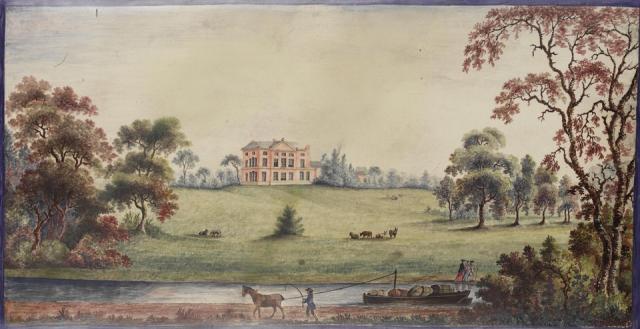Wedgwood and Artists
Long and fruitful relationships with great artists have allowed Wedgwood to make objects of great beauty throughout its history.
Plaque Depicting Etruria Hall
When Josiah built his new factory at Etruria, he asked his architect, Joseph Pickford of Derby, to design a fitting residence suitable for his status as a ‘Master Potter’ that would accommodate his growing family.
This Wedgwood biscuit earthenware plaque shows the resulting home, Etruria Hall, and its proximity to the Trent & Mersey Canal. Josiah carefully planned that this inland waterway would pass not only by the new Etruria factory but also that it would ‘terminate’ his lawns with water. The horse-drawn narrow boat in the foreground is thought to be the earliest known representation of this mode of transport. A similar view showing Wedgwood’s residence and the canal was featured on an oval platter that formed part of the famous ‘frog’ service, sent to Catherine the Great of Russia in 1774.
The plaque is decorated in polychrome enamels and was originally attributed to the hand of Edward Stringer. Later research suggests that the actual artist was James Bakewell. In a letter written from Benjamin Mather at Wedgwood’s Chelsea decorating studio to Josiah on 5 November 1774 it is mentioned that, ‘…Jas. Bakewell would be glad to do Landscape ware; if you think proper to imploy [sic] him in that Work – he has just finished a Tablet painted with a Landscape in Colours, which succeeded very well in the Colour, & in Workmanship the best that has been done yet…’
Wings were added to the Hall in 1780 to accommodate Josiah and Sarah’s growing family – their last child, Mary Anne, was born in 1778.
The plaque was recorded as having been found ‘on the works’ at Etruria in 1905. Around this time, many pieces were rediscovered prior to being housed and displayed in the first Wedgwood Museum that was opened at Etruria on 7 May 1906.
